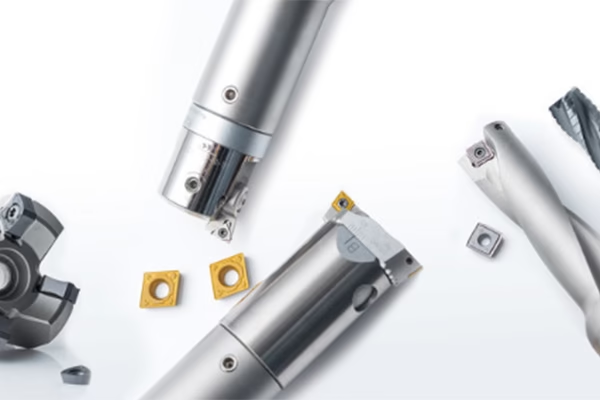- Packaging Printing Blade Series
- Inlaid Steel Blade Series
- Tungsten Inlaid Steel Blade Series
- Pneumatic Tool Holder And Slitting Upper And Lower Tool Series
- Hot Sealing Knife Hot Cutting Knife Series
- Hard Alloy Blade Series
- Lithium Battery Blade Series
- PaperMachinery Blade Series
- Metallurgical Blade Series
- Special Shaped Blade Series
- Coating Blade Series
- Shearing Machine Bending Machine Series
Classification and Compatibility Matching of Tool Materials and Workpiece Materials
Classification and Compatibility Matching of Tool Materials and Workpiece Materials

In the field of industrial manufacturing and machining, cutting tools are defined as instruments that remove material from workpieces. Broadly speaking, tools encompass all instruments with material removal functions including cutting, shearing, and grinding. In a narrower sense, tools generally refer specifically to cutting tools.
Since the primary function of tools is material removal, the hardness of tool materials must exceed that of the workpiece material. Tool materials should have a minimum hardness of HRC60. Current mainstream tool substrate materials and their hardness rankings (from low to high) are: alloy steel (HRC 65); high-speed steel (HRC 63-70); cemented carbide (HRA 89-93); ceramics such as TiCN-based cermets (HRA 91-94); polycrystalline cubic boron nitride PCBN (HV4000); and polycrystalline diamond PCD (HV7500). Among these, cemented carbide dominates the current tool market.
Cemented carbide can be divided into tungsten carbide-based and titanium carbonitride (TiC(N))-based types. Tungsten carbide-based cemented carbide includes three categories: tungsten-cobalt (WC-Co) class (YG), tungsten-cobalt-titanium (WC-TiC-Co) class (YT), and those with additional rare carbides (WC-TaC/NbC-Co) class (YW), with cobalt as the common binder phase. Titanium carbonitride-based cemented carbide uses molybdenum and nickel as binder phases.
Chinese national standards classify carbide tools by workpiece material into six categories: P, M, K, N, S, and H:
P: Steel materials including carbon steel, alloy steel, and cast steel
M: Stainless steel and martensitic cast steel
K: Cast iron materials
N: Non-ferrous metals (aluminum, magnesium, copper alloys)
S: Difficult-to-machine materials (heat-resistant alloys, titanium alloys)
H: Hardened materials
The selection of appropriate tool materials for specific workpiece materials requires comprehensive evaluation of three key aspects: mechanical properties, physical properties, and chemical properties.
I. Mechanical Property Matching
Mechanical properties primarily refer to strength, toughness, and hardness. Tool materials ranked by bending strength: high-speed steel > cemented carbide > ceramic > diamond/PCBN; by toughness: high-speed steel > cemented carbide > PCBN/diamond/ceramic; by hardness: diamond > PCBN > ceramic > cemented carbide > high-speed steel.

Higher hardness tools offer better wear resistance but typically have lower strength/toughness, making them more suitable for finishing operations. Conversely, tools with higher toughness are better suited for roughing applications. Recent innovations in carbide tools incorporating superalloy elements have created materials with exceptional high-temperature mechanical properties, particularly suitable for machining M and S category materials.
II. Physical Property Matching
Key physical properties include thermal conductivity, thermal expansion coefficient, and heat resistance. The thermal conductivity of the tool should complement that of the workpiece – materials with poor thermal conductivity require tools with high thermal conductivity to effectively dissipate heat. Diamond’s exceptional thermal conductivity (1.5-9 times that of carbide, 2-6 times that of copper) makes it particularly suitable for machining non-ferrous metals, composites, and other specialized materials.
III. Chemical Property Matching
Chemical compatibility prevents adverse reactions like diffusion or adhesion between tool and workpiece materials. Diamond demonstrates the highest anti-adhesion temperature with steel, while ceramics offer superior oxidation resistance.
Selection Guidelines:
Tool material hardness must exceed workpiece hardness
Thermal conductivity should complement the workpiece material
Thermal expansion characteristics affect precision – materials with lower thermal expansion coefficients enable higher precision machining
Tools with both high thermal conductivity and heat resistance are particularly suitable for high-speed machining of difficult-to-cut materials

Current Market Trends:
Tungsten carbide-based tools currently dominate approximately 70% of the market due to their well-balanced performance characteristics and cost-effectiveness. Two primary technological directions are emerging in tool material development: ultra-fine/nano grain carbide development, and enhancement of the cobalt binder phase with superalloy elements. The latter approach, exemplified by Reine Group’s “Super Carbide” series, demonstrates superior performance for difficult-to-machine materials while maintaining better economic viability.
Reine Precision Engineering specializes in advanced tooling materials for cutting, grinding, and stamping applications, with particular focus on solutions for challenging materials in aerospace, new energy, automotive, and 3C industries. Our super carbide, cermet, and specialty material products deliver exceptional performance for demanding machining applications.

Facebook
Twitter
LinkedIn
Table of Contents
Related Post
History and Future Trends of Cutting Tools
Cutting tools stand as both witness and catalyst in the development of human industrial civilization....
The Most Comprehensive Classification of Cutting Tools
(I) Classification of Cutting Tools
Cutting tools are typically categorized by processing method and...
Our Company
Caleseiko stands as a global leader in mechanical blade manufacturing, renowned for its unwavering commitment to quality, innovation, and customer satisfaction. With decades of expertise, the company delivers cutting-edge blades that excel in precision, durability, and performance across diverse industries. From advanced materials to state-of-the-art production techniques, Caleseiko consistently sets new benchmarks in the industry. Their dedication to excellence and tailored solutions makes them the trusted partner for businesses worldwide.
Caleseiko: The Gold Standard in Blade Manufacturing
Innovating the Future of Cutting Technology
Precision Engineered for Unmatched Performance
Trusted by Industries Worldwide for Decades
Where Quality Meets Cutting-Edge Innovation
Caleseiko: Your Partner in Precision and Reliability
